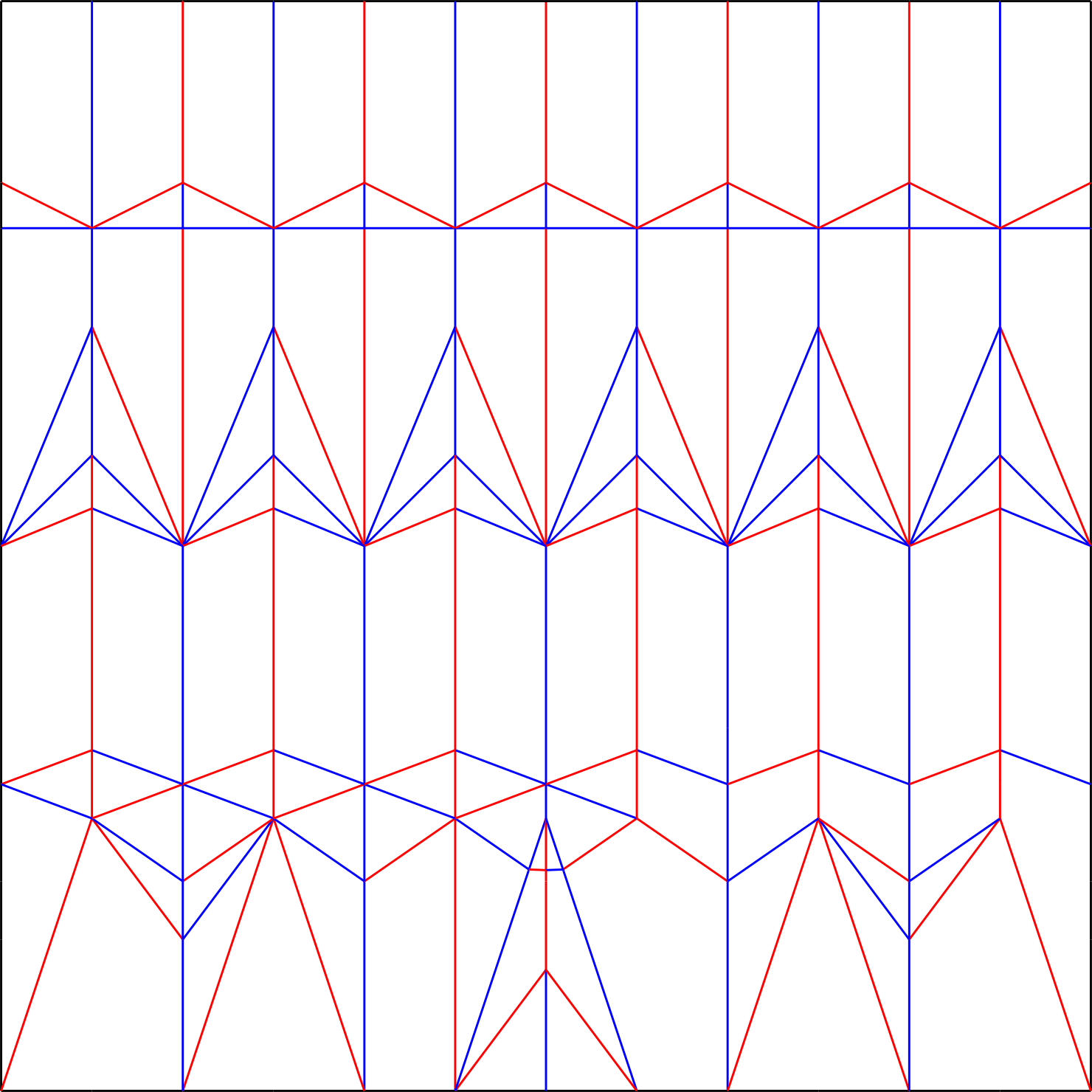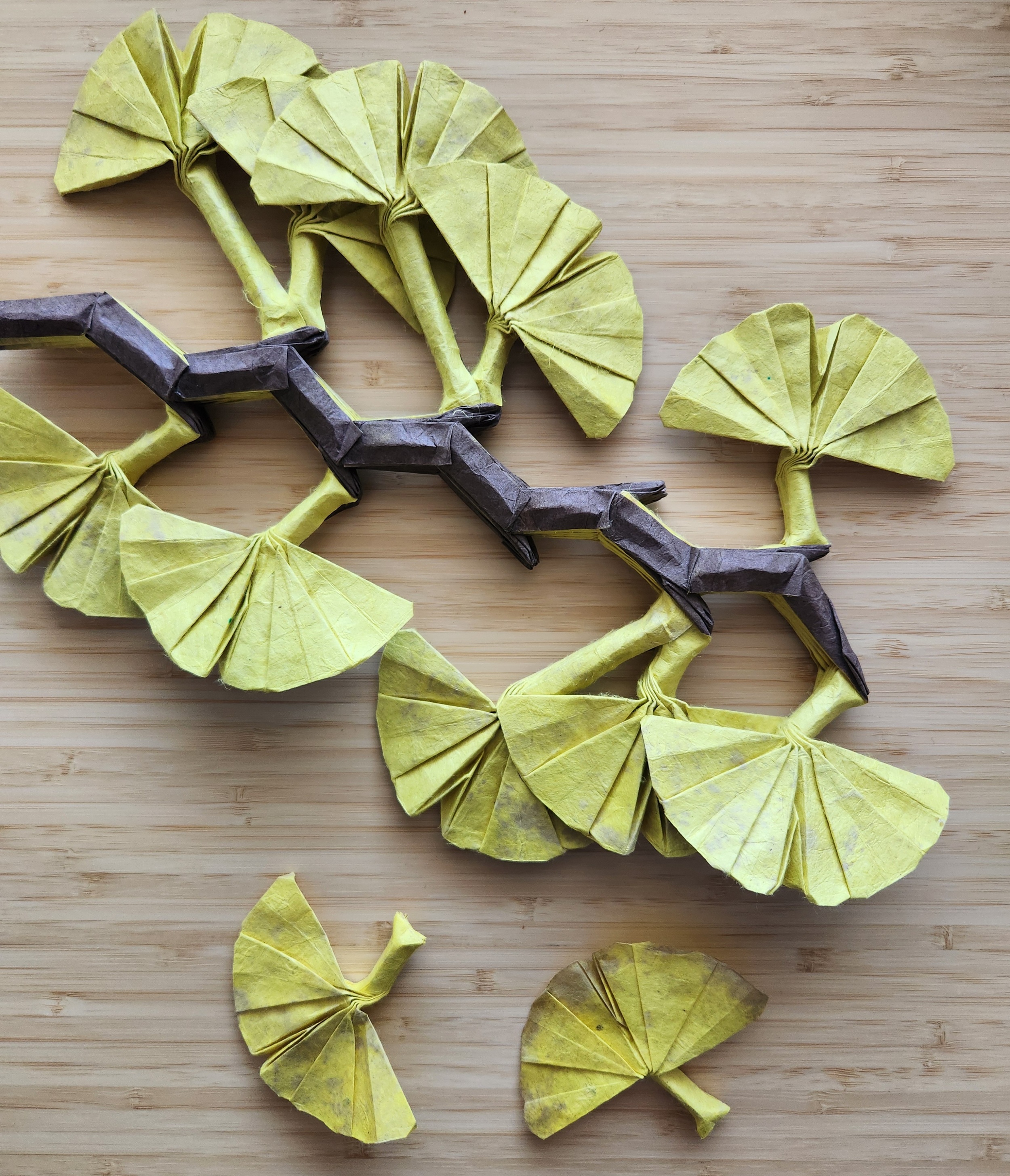Ginkgo Branch (2023-2025)
Folded from 14 uncut squares of yellow and brown lokta
Crease pattern: Below
Diagrams: PCOC Origami Collection 2025
Ginkgo Branch: A living modular
Modulars are models folded folded from multiple identical units, that hold together to form a shape on their own. Typically modulars are geometric in nature, and honestly I’ve stayed away from them for most of my origami career because I gravitate towards real life subjects. Not that modulars are somehow lesser than! I’ve often marveled at the beauty and complexity of modulars, and whenever I’ve tried one, I’ve invariably failed to put the units together successfully.
A few years ago, I started thinking about endangered plants around me in British Columbia, one of which is the southern maidenhair fern. It’s a small, delicate plant with toothed leaves. While I’ve typically folded plants from one square sheet of paper (often with a lot of effort and messiness!), the southern maidenhair fern spoke to me and said it should actually be a modular.
And so I made a living modular (similar to the living tessellation of the Artichoke). Much like the many modular polyhedra out there, the fern has one unit (a single leaf and a section of the stem), and the units lock together with just the paper itself. In this case, the pleats of each unit are interleaved, and crimps lock everything in place pretty firmly.

One wrinkle is that many people who saw this model immediately recognized it as the much better known ginkgo leaves! I decided to redesign the model as a ginkgo branch, in part because it’s more familiar and also because you can fold life-size ginkgo leaves quite easily (I would recommend using 6-8″ squares). I plan to come back to southern maidenhair fern some day, which are much much tinier but just as deserving of the attention.


Leave a Reply